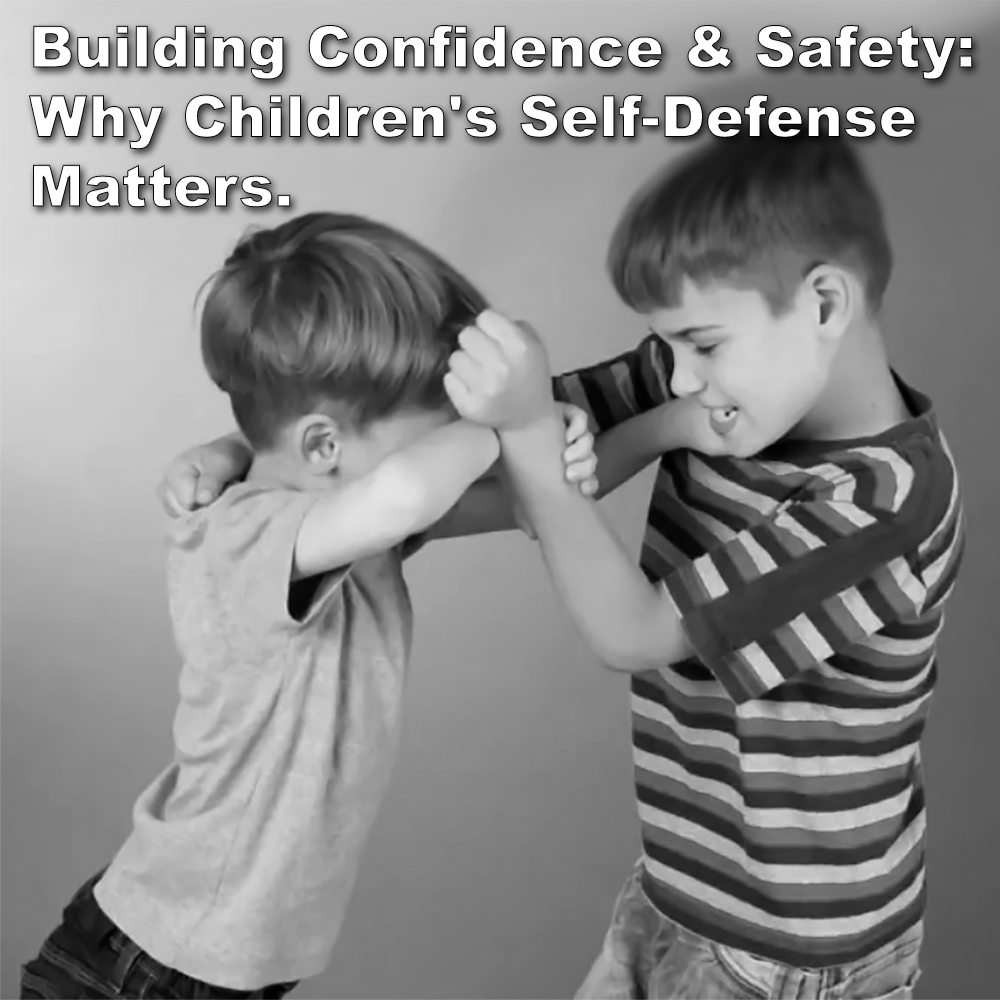
Building Confidence & Safety: Why Children’s Self-Defense Matters.
Posted by ADAM CARTER on APR 12, 2024

Building Confidence & Safety: Why Children’s Self-Defense Matters.
(2 minute 40 second read)
There are levels to teaching students, no matter the subject. But just because some of the students are at a lower level, or children, or beginners, what I do not agree with, is teaching something that is fundamentally flawed because of that level.
A comment on a recent article stated that they don’t teach children realistically because of “liability”.
So why teach children realistic self-defense?
Because this is one of the areas where self-defense is most relevant and needed today.
The “hard skills” of self-protection training is a tough one when it comes to teaching children. I am not going to dispute this. Furthermore, the very real limitations presented by children, greatly highlight the importance of learning and teaching “soft”, or non-physical skills.
It’s a little surprising then that we find the typical children’s class to be centered upon unrealistic self-protection methodology. Punch, block, punch block, often sited as just a ‘step on the training ladder’ – it’s just not realistic, no matter which way you look at it.
While it’s understandable to adapt teaching methods for children, it’s important not to impart ineffective techniques simply because of their age, disguising them as mere ‘steps on the learning path’.
Of course you have to start somewhere, a fundamental aspect of any training process. However, teaching flawed methods that must later be unlearned is counterproductive. It’s crucial to establish a strong foundation from the start and build upon it progressively, integrating new techniques as needed while retaining the old ones. Teaching the correct approach from the outset is essential.
So why introduce children to techniques that aren’t effective?
Instead of teaching potentially ineffective punch, block, punch, block drills, which if you think about it, is teaching children how to fight (something many comments were against), teach children self-protection for their level and understanding – which can begin with role-play.
Test their understanding of personal space, how to handle verbal aggression, taunts and deception.
Verbalization skills are important, as children need to be able to shout to raise attention when put under pressure – especially if someone is trying to abduct or manhandle them.
Escape must be the priority of any self-protection “hard skill” and this means reinforcing it at as often as possible in training.
In my classes we use role-play and when we require children to strike, we teach them to hit a target until it stops becoming an obstacle and an escape can be secured. This is applied to most drills, whether it’s a focus mitt exercise, striking the ‘Bob’, or a specific resistance based game or sparring.
We approach self-defense with a clear understanding that fighting is a serious option. We don’t glorify it, and we spend a lot of time practicing de-escalation skills to prevent situations from reaching that point.
Why teach anything that has limitations in the way it works – for anyone? If I cannot deliver a system that can be applied by those in our society who need it the most, then I am not really teaching self-protection.
From my experience with children’s karate training, it’s not about teaching kids to fight, but we can certainly introduce them to what I call “school yard self-defense” (mostly evading, escaping grips, pushes, bear hugs, head locks and so on).
Kids like to wrestle so we have fair and safe grappling, standing and on the ground….. it’s good fun.
In my opinion, for children (why not adults too), all training needs to be guided towards escape. Repetitive stepping, punch, block, punch, block, is not in anyway realistic.
If we’re teaching children, let’s equip them with techniques that will truly keep them safe when they need it most, rather than ones that may fail them. After all, wasn’t self-defense the primary purpose behind the creation of karate?
